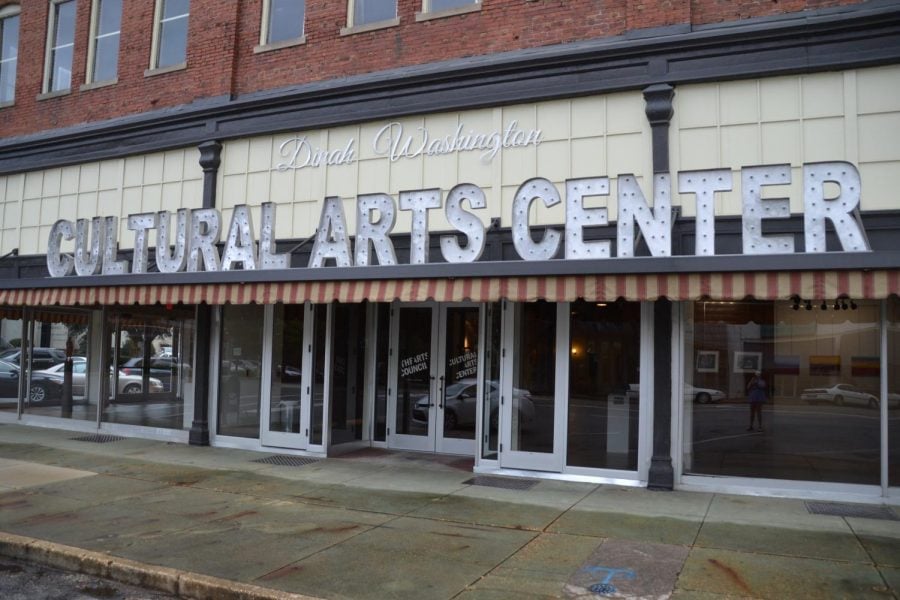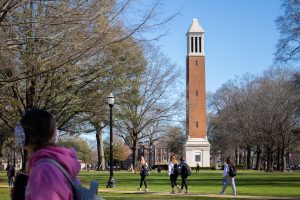Civil rights history organization opens trail
Civil rights historians, locals develop history trail
April 25, 2019
Nearby Birmingham often overshadows Tuscaloosa in regard to civil rights history in both the classroom and national consciousness. But to the people who live here, no history can overshadow Tuscaloosa’s own scars.
Eight known lynchings occurred in Tuscaloosa County between 1884 and 1933, according to the Equal Justice Initiative. Robert Shelton, the grand wizard of the national Ku Klux Klan for more than 20 years, lived in the city until his death in 2003. The Tuscaloosa civil rights movement saw Woolworth sit-ins, bus boycotts, and a courthouse march that would become known as Bloody Tuesday.
“We were just a loosely formed group interested in civil rights history when we began this,” Tuscaloosa Civil Rights History Task Force President Scott Bridges said. “But after some back and forth with the city, they recognized us as the Tuscaloosa Civil Rights History Task Force on October 16, 2016. There were about 20 members of the task force there that night, and the mayor literally jumped down off the podium and wanted the council to come down and take a picture with us. He said that this founding would be remembered 100 years from now.”
Bridges leads a group of concerned citizens in their fight to preserve history as it was. University of Alabama faculty, Tuscaloosa clergy and civil rights veterans all became amateur researchers and historians as a result of their work for the organization.
Not long after the formation of the task force, Tuscaloosa Tourism and Sports (TTS) approached it with a desire to support the creation of a historical walking tour downtown. Similar civil rights trails exist in Birmingham and Montgomery that provide an enriching experience for the many travelers who stay in area hotels. TTS prioritized the creation of the trail and focused the task force’s efforts toward curating their civil rights knowledge into a trail pamphlet.
“We decided to look all the way back to the beginnings of the state,” Bridges said. “We examined the role slavery played, Reconstruction, Jim Crow, and how all of that led to the cultural collision that we call the civil rights period.”
By the start of 2019, the task force had assembled information on 18 stops around the downtown area. These stories were compiled into a trail pamphlet by John Giggie, director of the Summersell Center for the Study of the South. Trail markers will be installed at each of the stops. The self-guided walking tour is estimated to take around an hour and a half.
“This is an honest attempt to look at history square in the eyes,” Bridges said. “Not in a flamboyant manner, but as factually as we can, as authentically as we can, through personal memories and consulting with historians.”
The task force does not simply see the trail as a tourist destination. Instead, its members view it as an opportunity to educate their fellow citizens, as well as students at the University.
“I’m 90 years old, so I lived through a lot of ups and downs in the civil rights era,” Mary Jolley, trail contributor and Tuscaloosa native, said. “I’ve been aware that there’s an absence of knowledge in the white community of black history. We know there was slavery, of course, and racial discrimination, but there’s a black culture and a black strength of character that was unknown to us, or at least to me.”
Though Tuscaloosa did not share the headlines with Birmingham, Montgomery or Selma, the city’s struggle for integration was important to the highest leaders of the movement.
“The movement in Tuscaloosa was part of a little known but vital strategy devised by [Martin Luther King, Jr.] and the SCLC,” Giggie said. “This was where the national center for the Klan was based, where its leader lived. If they could defeat the Klan on its home turf, bring equal access and rights to the African Americans of Tuscaloosa, there’s a huge symbolic value to that.”
Jennifer Stollman, former academic director at the William Winter Institute for Racial Reconciliation, guides the task force in its efforts to bring about change with its knowledge. After the organization’s efforts in creating the trails are complete, it will evolve into the Tuscaloosa Civil Rights History and Racial Reconciliation Task Force.
“When you go to meetings where people talk about civil rights, you often hear, ‘We’ve come a long way, but we’ve got a long way to go,’” Jolley said. “I decided that I knew what I was going to do about the ‘long way to go,’ and that’s reconciling the breach between races… Young people tend to say, ‘I had nothing to do with slavery. Don’t blame me. I love everybody, and everyone’s welcome with me,’ but that ignores the whole culture of the black community and the trials and tribulations they have faced.”
Racial reconciliation is the key to continued work of the task force, members said. It will focus on achieving reconciliation by leading citizens to acknowledge lingering racism and address those issues through interracial dialogues.
“We’ve created a training program to get people to understand what their hidden biases may be,” Jolley said. “It involves both black and white. You can’t really reconcile if you’re only talking to your same race. You’ve got to meet together.”
For more information on the trail and the Tuscaloosa Civil Rights History Task Force’s future projects, visit civilrightstuscaloosa.org.










